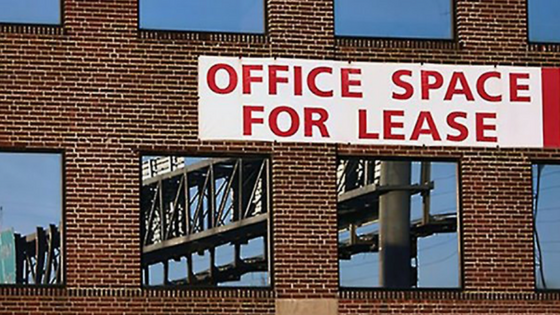In recent years, space reduction projects have become increasingly popular among federal agencies, both as a way to provide an updated and more efficient office layout (think mobility, telework, hoteling, collaborative spaces, etc.), and as a way to attract a younger generation of workers. But agencies also cite a reduction in rent costs as one of the top reasons for reducing their office space, and with good reason. In 2014, it was estimated that the federal government spends $4.2 billion in rent. But does a reduction in space always translate to a corresponding reduction in rent payments? You might be surprised by the answer.
Recent Federal Guidelines in the Leasing Market
Despite popular belief, Congress does try to rein in federal spending, at least in some areas. Although the cost of renting office space is a fraction of total federal spending (just 0.14% of the total federal budget), it has received bipartisan focus in recent years.
In 2010, President Obama issued a memorandum for federal agencies to identify unneeded federal real estate in an effort to eliminate wasteful spending. Strategies included consolidating space, implementing telework and alternative workplace policies, and eliminating unnecessary leases.
In 2013, the Obama administration went a step further and issued the Freeze the Footprint policy, which required federal agencies to eliminate unnecessary space. Each new space acquisition or increase had to be offset by a corresponding decrease in space in the agency’s portfolio. The government estimated that the initiative reduced office space by 21.4 million square feet between FY 2012 and FY 2014.
Additional policies have included the National Strategy for Real Property and the Reduce the Footprint policy, which mandated actual space reductions, not just a freeze in space increases, beginning in FY 2016.
But have these space reduction actions resulted in lower costs to the government? Not necessarily.
The Reasons for Increasing Rental Costs
So why would federal agencies that have reduced their space not necessarily see a corresponding reduction in their rent costs? There are several reasons for this.
1. Lack of certainty on federal spending and agency budgets has resulted in an increase in costlier short-term leases.
The uncertainty in federal spending, caused largely by years of continuing budget resolutions and slow economic growth following the 2007-2008 financial crisis, has resulted in many agencies deferring space reduction or consolidation projects. Instead of identifying long-term solutions for underutilized space, agencies instead extend their existing leases for shorter terms while attempting to justify projects or make funding decisions.
In 2014, then-GSA Public Buildings Service Commissioner Norman Dong testified to Congress that uncertainty about federal spending, including agency budgets and leasing actions, had caused GSA to increase its short-term lease extensions for spaces with expiring terms. Because these shorter-term deals provide less certainty and are riskier for landlords, the result is that GSA pays a premium for a new lease term, a cost that is passed on to the individual federal agency. In 2014, an estimated 16.8% of GSA leases were under a short-term extension, up from just over 12% in 2009.
2. Space reduction projects cost money, which may be rolled into rent payments.
This may seem obvious, but consolidating space, relocating into federally owned buildings, and reconfiguring existing office space to support teleworking and hoteling costs money. Federal agencies have the option of funding these projects out of their budgets or rolling the costs into their annual rent payments. Because of budget constraints, the latter option – amortizing the costs of a project over the period of a lease, typically 10 years – is often more attractive than paying up front for the project.
In addition to major renovation and construction, GSA allows its tenants to use funds to improve their space at the beginning of a renewed lease. These improvements include cosmetic updates, such as paint, carpeting, and window treatments.
So, while the charge basis for the rental rates will decrease because of a space reduction project, the amortized project costs may increase the rent bill for the duration of the new lease. Even minor updates to a space when the lease is renewed can increase the rent charges if the costs are amortized in the bill.
3. GSA leases include annual cost and rate increases.
Even with reduced space, GSA leases typically include annual rate changes in several areas:
- Independent market appraisals are conducted periodically in all locations and may cause a change to the rent bill when a new appraised rental rate is applied. In recent years, the growth in the U.S. economy has resulted in new leasing activity and increases in market rates, which causes increases in the rates charged by GSA or its landlords.
- Annual step increases to the rental rates cause a change in the rent bill each year of the lease.
- Operating rent charges, which include the costs associated with maintaining a building (cleaning, maintenance, and utility), are typically reviewed annually and cause a change in the rent bill if market costs change, if an annual inflation factor is applied (which is typical in most federally owned building leases), or if a negotiated increase has been included in the lease (typical in leased buildings and generally tied to the consumer price index).
- Building improvements and security features that occur during the term of a lease cause an increase in the rental rates for the building tenants. These could include capital improvements to a building, as well as projects designed to increase the security of an entire building and its tenants. In these cases, GSA rolls the costs of these projects into its tenant rent bills.
- Changes in building amenities, which include areas that all tenants have access to (cafeterias, child care facilities, public restrooms, etc.), may affect a rent bill if improvements are made or new facilities are added.
If My Rent Will Increase Anyway, Why Should I Consider Reducing Space?
Great question! The first answer is that most federal agencies are under mandates to reduce their space. But even without such mandates, the benefits of undertaking space renovation projects extend beyond simply reducing a facility inventory. Space reduction and consolidation projects provide the opportunity to implement new office layouts and to offer new working arrangements, including teleworking.
And while it is true that reducing space doesn’t automatically result in a decrease in costs, there are several things federal agencies can do to manage their costs and to plan effectively.
1. Understand the leases and review the monthly rent bills.
GSA offers tools for managing rental payments and leases – Rent on the Web (a database of monthly rental costs for each occupancy agreement) and Electronic Occupancy Agreement (a database of all occupancy agreements). Many agencies automatically submit their monthly rent payments to GSA without taking the time to review and confirm the charges. Understanding the components of the rent bill and verifying the monthly changes and updates is an important first step in managing the costs and budget.
2. Budget for annual increases.
Reviewing the occupancy agreements and planning for annual increases, which are detailed in each agreement, can be a big help in projecting current and future rental payments across a facility portfolio. This type of planning also helps ensure that rental costs are charged appropriately for new spaces and that the charges for reduced or vacated spaces are removed from the rent bill or credited back in a timely manner.
3. Consider alternatives for funding projects or managing tenant improvement costs.
The opportunity to amortize project costs over the life of a 10-year lease is an attractive funding option for agencies that are facing fiscal constraints, but there are other options. One of these is to pay off an amortized tenant improvement balance early to avoid the ongoing costs in a rent bill. Where possible, agencies may want to plan future budgets to include these early paybacks for project costs. Another option is to develop a prioritized list of facility projects that can be fully funded as they are undertaken, so the only long-term cost is the rent.
4. Choose the right projects.
Although the opportunity to improve office spaces with renovation and reduction projects is appealing, the reality is that not all projects offer the same return on investment. Taking the time to do a cost-benefit analysis across a portfolio will help agencies determine the projects likely to yield the greatest return in the shortest amount of time. A simple calculation to show this is a break-even analysis – i.e., the number of years before the total cost of a project is likely to be offset by the corresponding reduction in rent, even with the anticipated rent increases described above. A good break-even benchmark is typically five years, although many agencies are now using three years or less as their target.
The Bottom Line
Being an informed consumer is always a good idea. For federal agencies that are customers of GSA, this is no different. The bottom line is that there are many ways to comply with mandates to reduce your space footprint while also managing the rental costs associated with a facility inventory.








.jpg)


.jpg)
.jpg)
-1.jpg)
.jpg)
.jpg)
.jpg)
.jpg)
.jpg)

